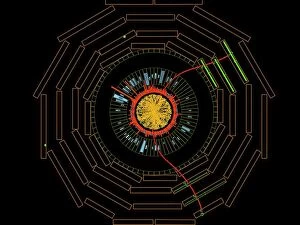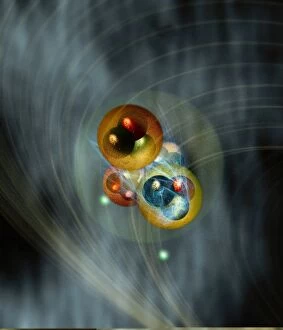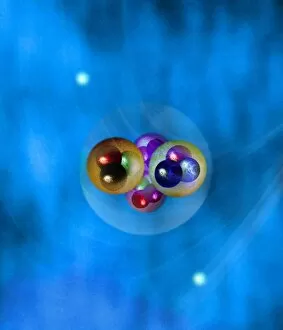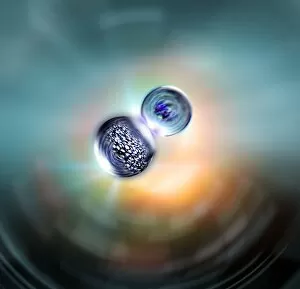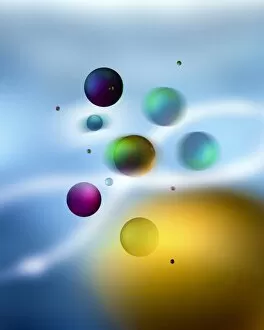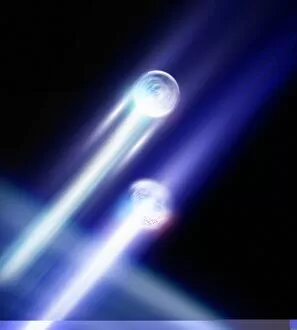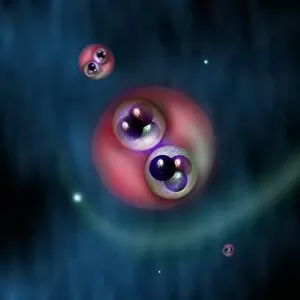Hadrons Collection
"Unveiling the Mysteries of Hadrons: A Journey into Subatomic Collisions and Conceptual Models" Step back in time to 1793
For sale as Licensed Images
Choose your image, Select your licence and Download the media
"Unveiling the Mysteries of Hadrons: A Journey into Subatomic Collisions and Conceptual Models" Step back in time to 1793, as lead ions collide in a groundbreaking experiment known as C014. This collision marked the beginning of our quest to understand hadrons, the building blocks of matter. Fast forward to 1802, when protons collided in another C014 experiment. Scientists were captivated by the immense energy released during these collisions, unraveling new insights into the nature of particles. In 1814, yet another proton collision under C014 shed light on the intricate world within atoms. These experiments paved the way for revolutionary discoveries that would shape our understanding of subatomic particles. The year 1803 witnessed an astonishing proton collision under C014's watchful eye. The resulting data propelled scientists closer to comprehending how hadrons interacted with one another and their role in shaping our universe. Five years prior, in 1798, protons collided once again under C014's guidance. This event sparked excitement among researchers who delved deeper into studying these elusive particles and their behavior within atomic structures. Conceptual models like hydrogen atom (C013 / 5605) and helium atom (C013 / 5600 & C013 / 5601) provided visual representations aiding scientists' comprehension of complex subatomic phenomena. Through these models, they could visualize how hadrons fit into larger atomic frameworks. Art meets science through conceptual artwork depicting particles (C013 /5639 & C013/5626-27). These captivating visuals allowed researchers to explore possibilities beyond what was observable - pushing boundaries and expanding knowledge about hadrons' fundamental properties. As we continue this enthralling journey through scientific exploration, let us not forget those early pioneers who dared to venture into uncharted territories – unlocking secrets hidden within hydrogen atoms (C013 /5606) while paving paths towards a greater understanding of the universe.

